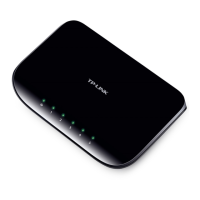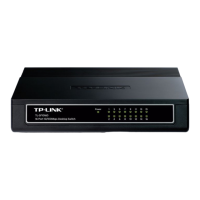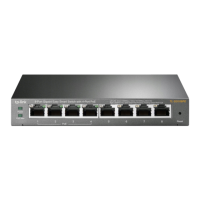User Guide 54
Configuring VLAN Configuration Example for 802.1Q VLAN
■ Create VLAN 3. On Switch A, add port 3 and port 4 of Switch A to VLAN 3, while on
Switch B, add port 1, port 3 and port 4 to VLAN 3.
■ Configure the default VLAN 1 to make sure the router can communicate with all ports of
the two switches.
Table 5-1 and 5-2 show configurations of VLANs on each switch.
Table 5-1 Relationships of Ports and VLANs on Switch A and Switch B.
Switch Ports in VLAN 1 Ports in VLAN 2 Ports in VLAN 3
Switch A 2, 3, 4 2, 4 3, 4
Switch B 1, 2, 3, 4 1, 2 ,4 1, 3, 4
Table 5-2 Settings of Egress Rule and PVID on Switch A and Switch B
Switch Port Egress Rule PVID
Switch A 2 Untagged 2
3 Untagged 3
4 Tagged 1
Switch B 1 Untagged 1
2 Untagged 2
3 Untagged 3
4 Tagged 1
Note:
If a port is connected to terminal devices like computers, add the port to the corresponding VLANs
as an untagged port, because terminal devices typically do not support VLAN tags.

